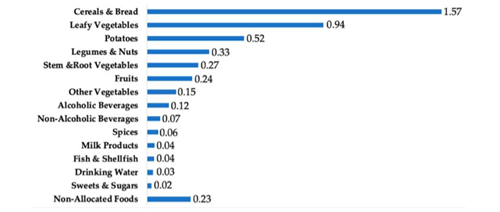Cadmium, Lead and Chocolate
As the professional non-profit organization representing the fine chocolate industry, our mission is to promote quality, innovations, ethical sourcing, and best practices in the fine chocolate industry from tree to bar and bonbon. Transparency and traceability are at the core of Fine Chocolate Industry Association (FCIA) member values.As such, we are committed to providing evidence-based information about cadmium and lead in chocolate to allow consumers to make informed decisions.
Background – Consumer Reports article
Cadmium and lead in dark chocolate have been covered in the media recently because of a December 15, 2022, Consumer Reports published article about lead and cadmium in dark chocolate. This article made claims about cadmium and lead in chocolate, discussed health complications associated with ingesting cadmium and lead, tested dark chocolate bars, and reported about the quantities of cadmium and lead they found. The article has lead to concern amongst consumers about ingesting lead and cadmium when eating chocolate.
What does the scientific evidence say?
Cadmium is a natural element found in the Earth’s crust, and it is naturally present in soil around the world1. Therefore, the knowledge that it is found to be present in food is not new information, nor is it surprising. Additionally, cadmium can be a byproduct of agricultural and industrial activities, which can make plant foods propagated in specific conditions vulnerable to contamination2.
The graph below was published in 2018, and it shows the major food sources found to most substantially contribute to dietary cadmium in the U.S.3. It is important to note that dark chocolate specifically is not on this list. The leading sources of cadmium in the human diet are healthy foods such as leafy vegetables, legumes, nuts, root vegetables and fruits. According to Dr. Keith Ayoob, “People are constantly encouraged to eat those foods, and they should continue to do so.”

Figure 1: Cd contribution (µg/day/person) from major food groups among the US population aged ≥2 years in NHANES 2007–2012.
It is also important to note that the Consumer Reports article utilized the minimum levels for cadmium and lead set out by Proposition 65 in California. The maximum allowable dose levels or MADL in California is 0.5 micrograms per day for lead, and 4.1 micrograms per day for cadmium. Proposition 65 in fact acknowledges that these are extremely conservative levels. These conservative levels are also not food safety standards; they are much more stringent than those set out by the U.S. Food and Drug Administration for children and women of childbearing age with cadmium at 2.2 mcg per day and lead at 8.8 mcg per day.4
Johns Hopkins Medicine toxicologist Dr. Andrew Stolbach told NPR that "The safety levels for lead and
cadmium are set to be very protective, and going above them by a modest amount isn't something to be
concerned about. If you make sure that the rest of your diet is good and sufficient in calcium and iron,
you protect yourself even more by preventing absorption of some lead and cadmium in your diet."5
Dark chocolate is not considered to be a significant source of dietary cadmium by the FDA, as it has not
developed specific guidelines with respect to allowable limits for cadmium in chocolate or cocoa.
Key takeaways
As an association with a global membership base, FCIA member companies are held to the food safety and quality standards set out by their relevant jurisdictions to ensure the safety of their products for consumers.
In relation to all food categories, dark chocolate has not been identified as a major contributor of cadmium intake.
We of course encourage consumers to discuss any specific concerns about their individual health with their healthcare provider.
1Centers for Disease Control and Prevention Cadmium Factsheet:
2Kijoon Kim , Melissa M Melough , Terrence M Vance , Hwayoung Noh , Sung I Koo , Ock K Chun, "Dietary
Cadmium Intake and Sources in the US" Nutrients 2018.
3Kijoon Kim , Melissa M Melough , Terrence M Vance , Hwayoung Noh , Sung I Koo , Ock K Chun, "Dietary
Cadmium Intake and Sources in the US" Nutrients 2018.
4Food and Drug Administration - Lead in Food, Foodwares, and Dietary Supplements
5https://www.npr.org/2022/12/17/1143239430/dark-chocolate-lead-cadmium-consumer-reports